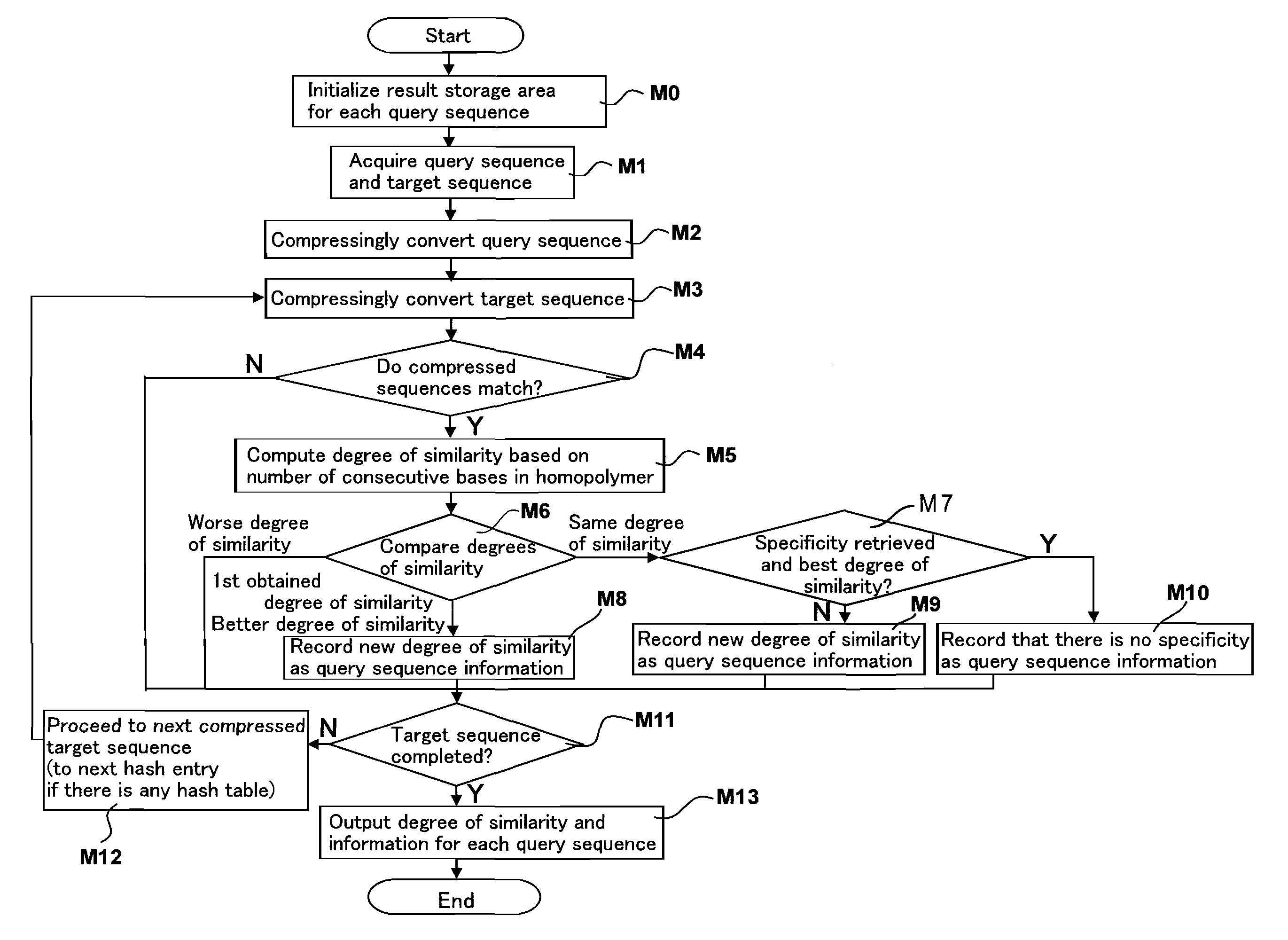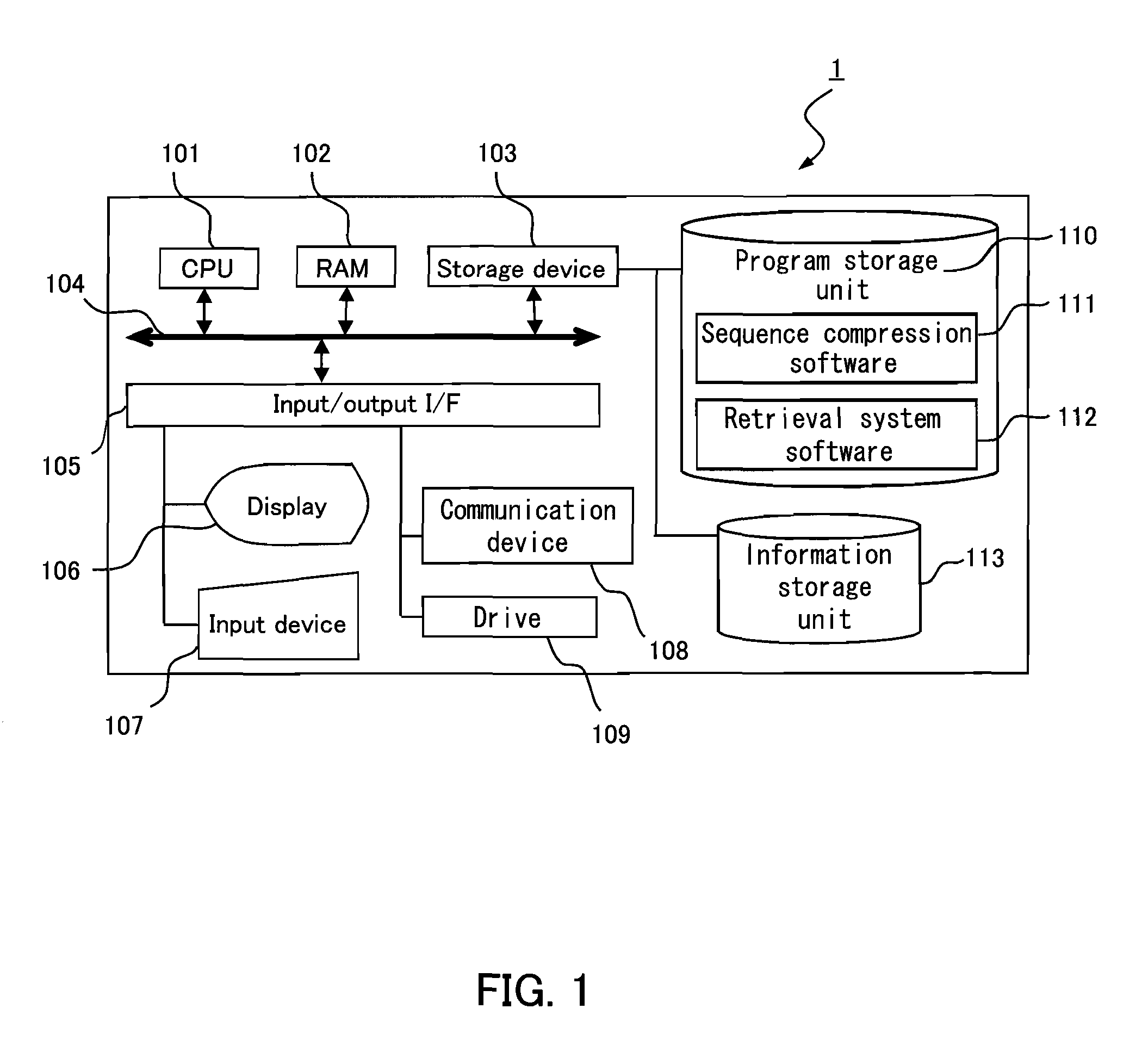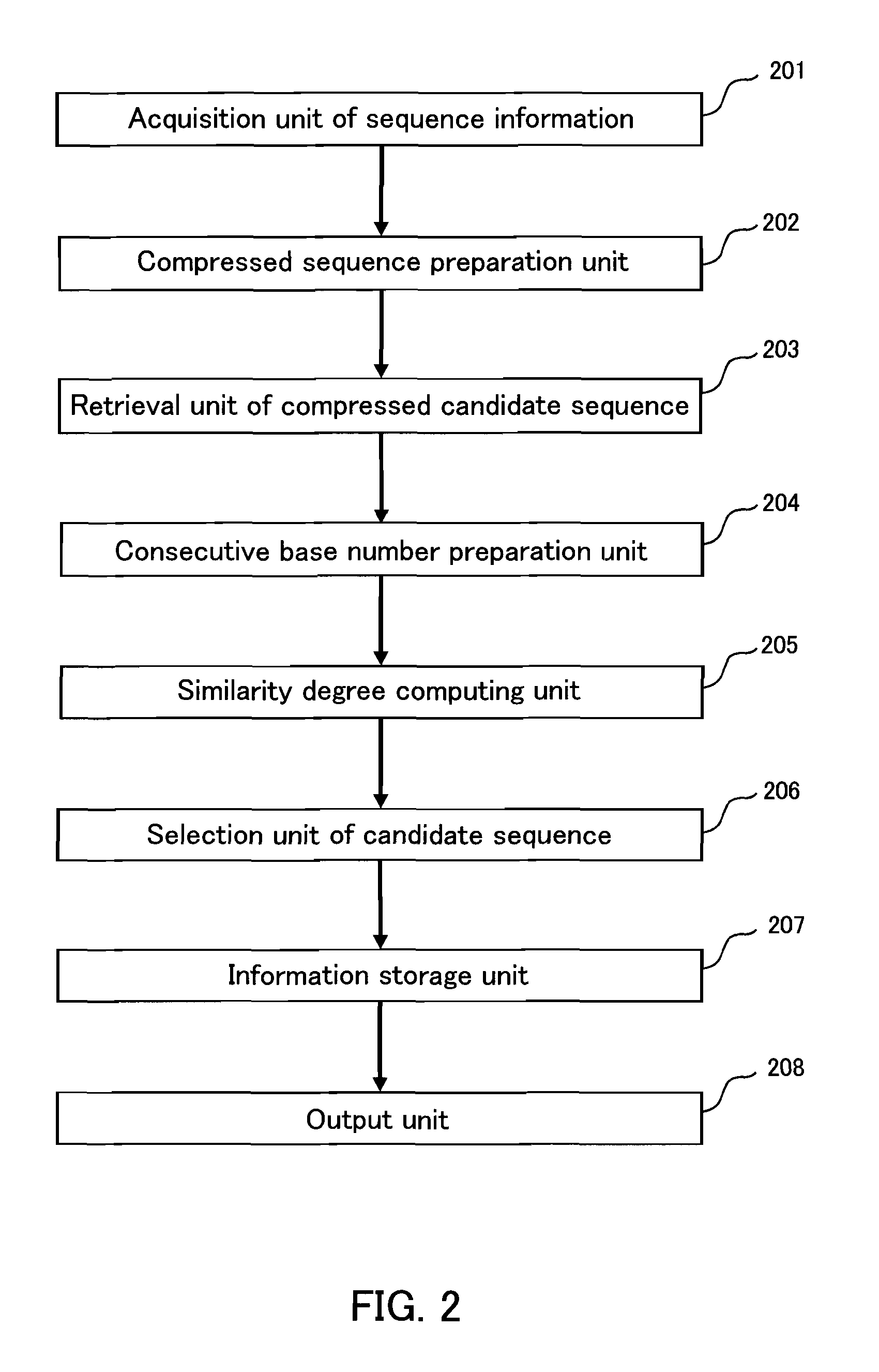Homology retrieval system, homology retrieval apparatus, and homology retrieval method
a technology of homology retrieval and homology, applied in the field of homology retrieval system, homology retrieval apparatus, homology retrieval method, can solve the problems of base sequencing method, inability to avoid the problem of homopolymer region sequencing accuracy, accuracy with regard, etc., and achieve high throughput, accurate homology retrieval, low determination accuracy
- Summary
- Abstract
- Description
- Claims
- Application Information
AI Technical Summary
Benefits of technology
Problems solved by technology
Method used
Image
Examples
embodiment 1
[0159]Hardware Configuration
[0160]The hardware configuration of a homology retrieval apparatus according to the present invention will be described schematically. It should be noted that the following configuration is merely an example, and the present invention is not limited thereto.
[0161]FIG. 1 is a block diagram showing an example of the hardware configuration of a homology retrieval apparatus according to the present invention. In FIG. 1, a homology retrieval apparatus 1 includes a CPU 101, a RAM 102, a storage unit (storage device) 103, an input / output I / F (interface) 105, a display unit (display) 106, an input unit (input device) 107, a communication device 108, and a drive 109. The RAM 102, the storage device 103 and the input / output I / F (interface) 105 are connected to the CPU 101 by a communication bus 104. The display 106, the input device 107, the communication device 108 and the drive 109 are connected to the input / output I / F (interface) 105.
[0162]The CPU 101 performs o...
embodiment 2
[0164]An example of each of the configurations of a first homology retrieval system and a second network-type homology retrieval system according to the present invention will be described.
[0165]Configuration Example of First System
[0166]FIG. 8 shows a diagram of an overall configuration of a stand-alone system, which is an example of the configuration of a system according to the present invention. The system shown in FIG. 8 includes a homology retrieval system 1 according to the present invention, and the homology retrieval system 1 includes a data input / output unit 12 and a homology retrieval unit 13. The homology retrieval unit 13 includes, for example, a sequence information acquisition unit, a compressed sequence preparation unit (e.g., a compressing conversion unit) that prepares a compressed sequence, a compressed candidate sequence retrieval unit, a consecutive identical base number preparation unit (e.g., a consecutive base number counting unit), a similarity degree comput...
embodiment 3
[0169]In the following, an example of a homology retrieval system according to the present invention will be described. FIG. 2 is a diagram schematically showing the configuration of a homology retrieval system according to this embodiment. It should be noted that the present invention is not limited to this embodiment, and various modifications can be made without departing from the gist of the invention.
[0170]As shown in FIG. 2, the homology retrieval system according to this embodiment includes a sequence information acquisition unit (input unit) 201, a compressed sequence preparation unit 202, a compressed candidate sequence retrieval unit 203, a consecutive identical base number preparation unit 204, a similarity degree computing unit 205, a candidate sequence selection unit 206, an information storage unit 207, and an output unit 208. One example of this homology retrieval system is a homology retrieval apparatus configured with a computer system having the above-described har...
PUM
 Login to View More
Login to View More Abstract
Description
Claims
Application Information
 Login to View More
Login to View More - R&D
- Intellectual Property
- Life Sciences
- Materials
- Tech Scout
- Unparalleled Data Quality
- Higher Quality Content
- 60% Fewer Hallucinations
Browse by: Latest US Patents, China's latest patents, Technical Efficacy Thesaurus, Application Domain, Technology Topic, Popular Technical Reports.
© 2025 PatSnap. All rights reserved.Legal|Privacy policy|Modern Slavery Act Transparency Statement|Sitemap|About US| Contact US: help@patsnap.com



